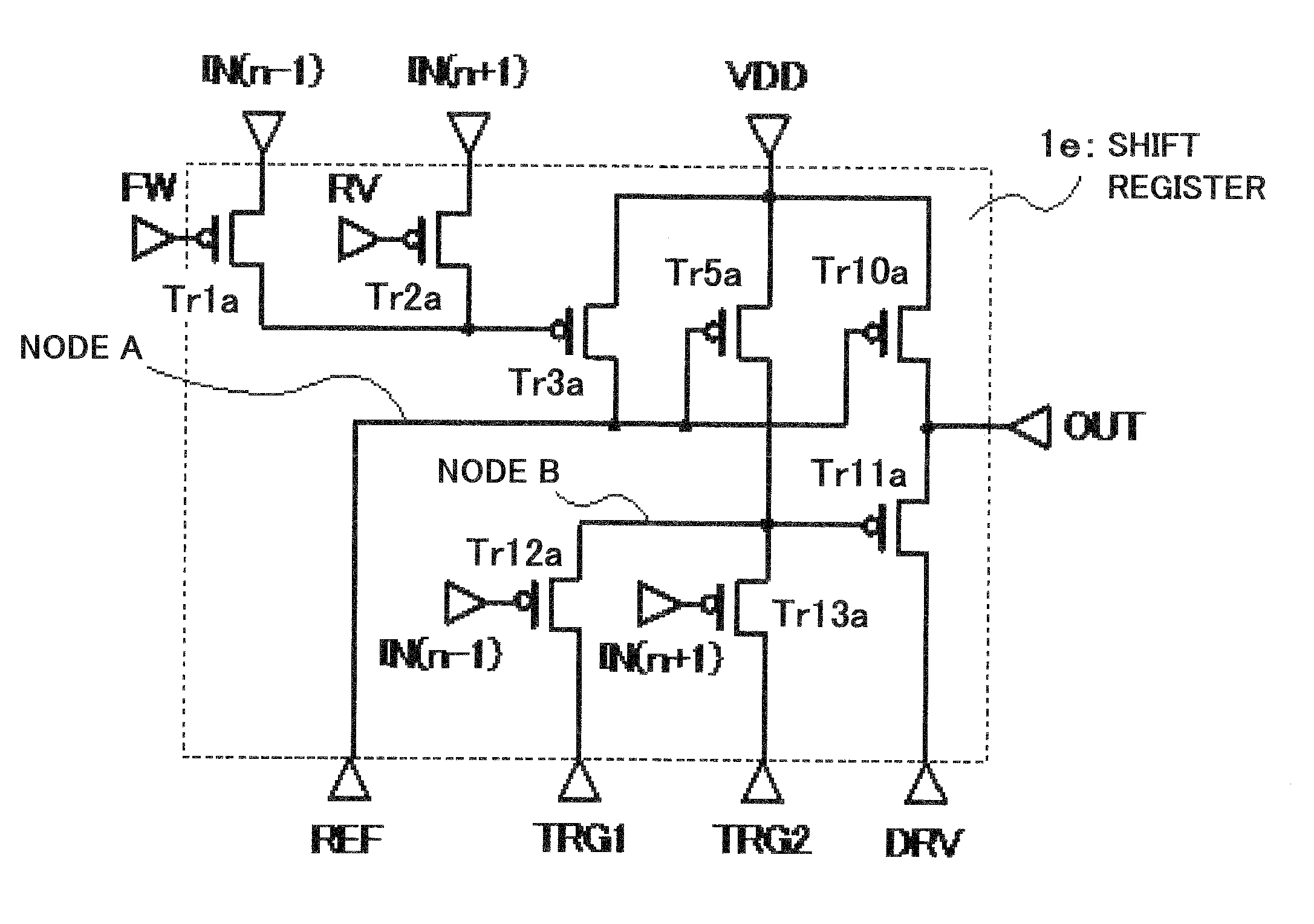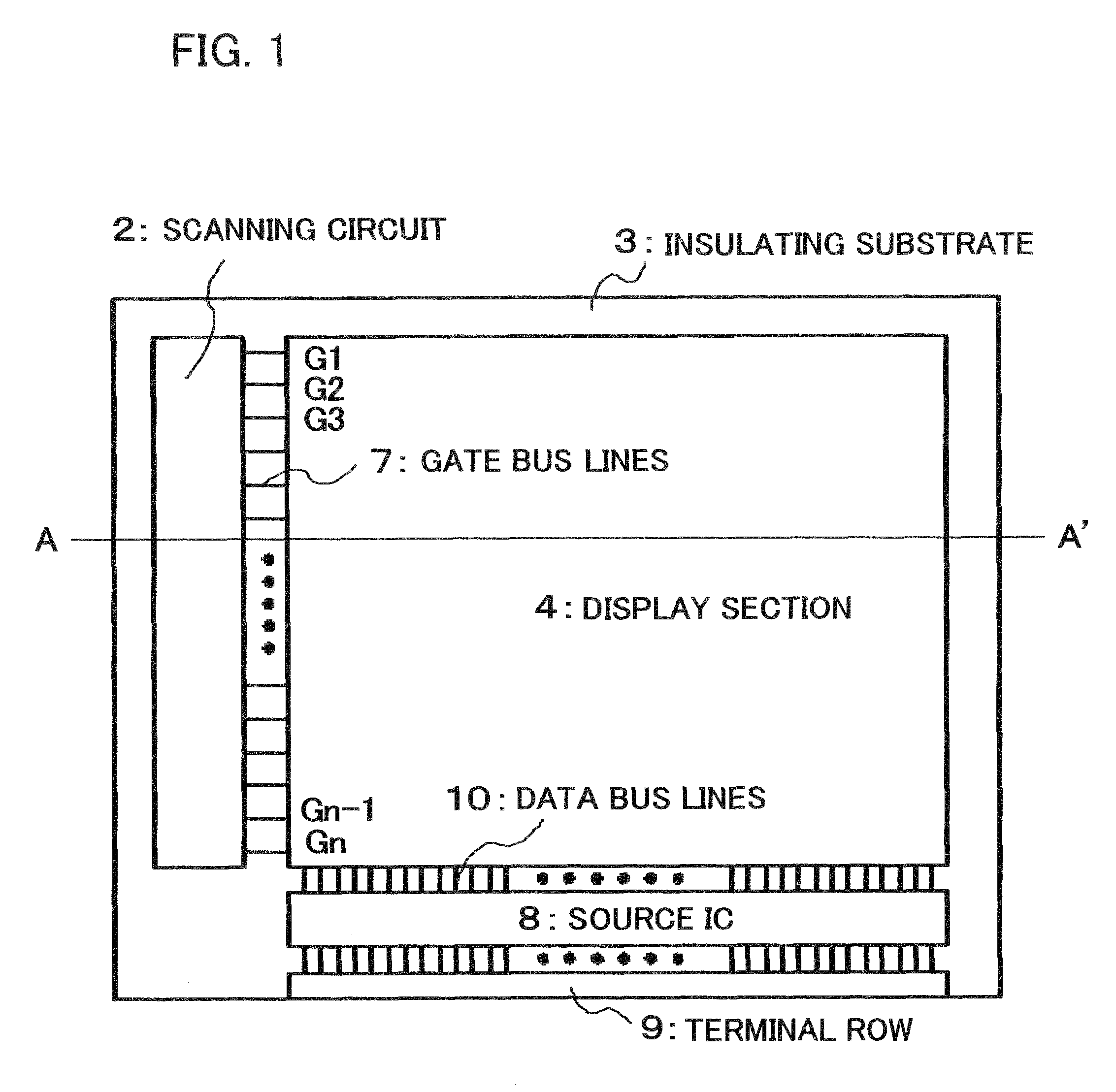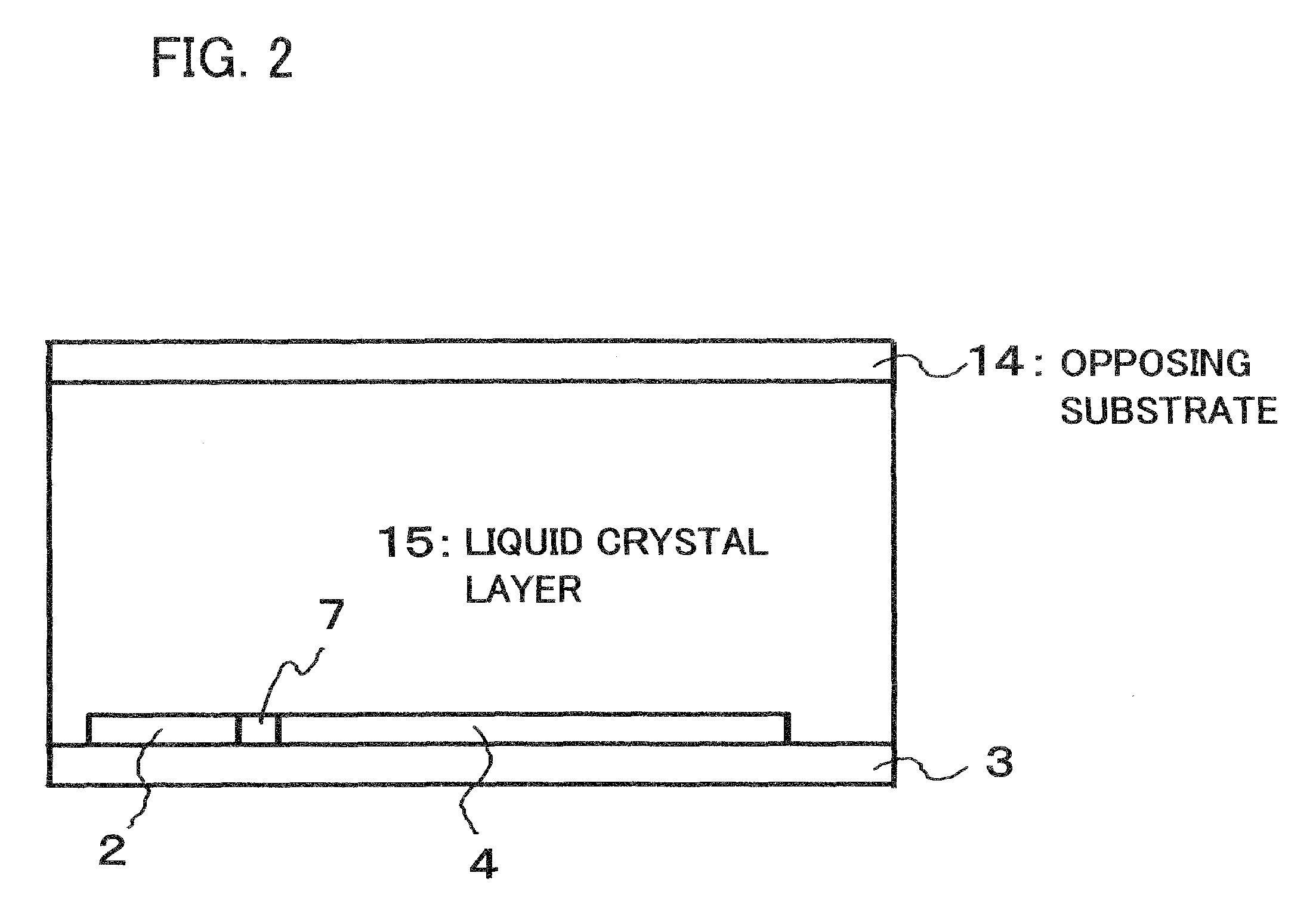Bidirectional shift register and display device using the same
a technology of bidirectional shift and register, applied in the direction of digital storage, static storage, instruments, etc., can solve the problem of large circuit siz
- Summary
- Abstract
- Description
- Claims
- Application Information
AI Technical Summary
Benefits of technology
Problems solved by technology
Method used
Image
Examples
first exemplary embodiment
[0104]FIG. 1 is a drawing showing a configuration of a display device according to a first exemplary embodiment of the present invention. In FIG. 1, in the display device, a display section 4, a scanning circuit 2, gate bus lines 7 (G1, G2, G3, . . . Gn−1, Gn), a source IC 8, a terminal row 9, and data bus lines 10 are installed on an insulating substrate 3, formed from transparent glass substrate. The scanning circuit 2 drives gates of switch transistors of pixels in the display section 4, via the gate bus lines 7. Furthermore, the source IC 8 supplies signals inputted from the terminal row 9 to sources of the switch transistors of the pixels of the display section 4, via the data bus lines 10. In the display section 4, a plurality of pixels, as shown in FIG. 6, described later, is arrayed.
[0105]FIG. 2 is a cross-sectional view (A-A′) of FIG. 1. In FIG. 2, the display device is composed of the insulating substrate 3, an opposing substrate 14, and a liquid crystal layer 15, and the ...
second exemplary embodiment
[0142]A display device according to a second exemplary embodiment of the present invention, as shown in FIG. 9 and FIG. 10, is similar to configurations shown in FIG. 1 and FIG. 2. However, switch transistors in pixels composing the display section 4 are PMOS transistors 13a as shown in FIG., 11. Furthermore, as shown in FIG. 9, all transistors Tr1a˜Tr11a composing the shift register 1 of FIG. 4 in the first exemplary embodiment and all transistors Tr20a˜Tr25a composing the switch array 30a of FIG. 10 are PMOS transistors. In addition, VDD is connected instead of VSS. Connection configuration is similar to the first exemplary embodiment.
[0143]The shift register(s) and switch array configured as above operate similarly to those described in the first exemplary embodiment. However, levels of all signals shown in FIG. 12 and FIG. 13 are the inverse of levels of signals shown in FIG. 7 and FIG. 8, respectively.
[0144]As described above, in cases in which PMOS transistors are used as in t...
third exemplary embodiment
[0145]The display device according to a third exemplary embodiment of the present invention is similar to configurations shown in FIG. 1 and FIG. 2. Furthermore, similar circuits are applied to the shift registers of the first exemplary embodiment shown in FIG. 4 and the pixel portion shown in FIG. 6. In the present exemplary embodiment, the fact that a scanning circuit operates by four phase clock signals (CLK1, CLK2, CLK3, CLK4) is different from the first exemplary embodiment.
[0146]FIG. 14 is a drawing showing a configuration of a scanning circuit according to the third exemplary embodiment of the present invention. In FIG. 14, the scanning circuit 2b is composed of a plurality of shift registers 1 (unit registers represented by SR1, SR2, . . . SRn), a plurality of switch arrays 30b (SA1, . . . SAm), and line groups (lines connected to terminals CLK1, CLK2, CLK3, CLK4, ST1, ST2, FW, and RV). Gate bus lines 7 are connected to OUT terminals of each of the shift registers 1 of the s...
PUM
 Login to View More
Login to View More Abstract
Description
Claims
Application Information
 Login to View More
Login to View More - R&D
- Intellectual Property
- Life Sciences
- Materials
- Tech Scout
- Unparalleled Data Quality
- Higher Quality Content
- 60% Fewer Hallucinations
Browse by: Latest US Patents, China's latest patents, Technical Efficacy Thesaurus, Application Domain, Technology Topic, Popular Technical Reports.
© 2025 PatSnap. All rights reserved.Legal|Privacy policy|Modern Slavery Act Transparency Statement|Sitemap|About US| Contact US: help@patsnap.com



